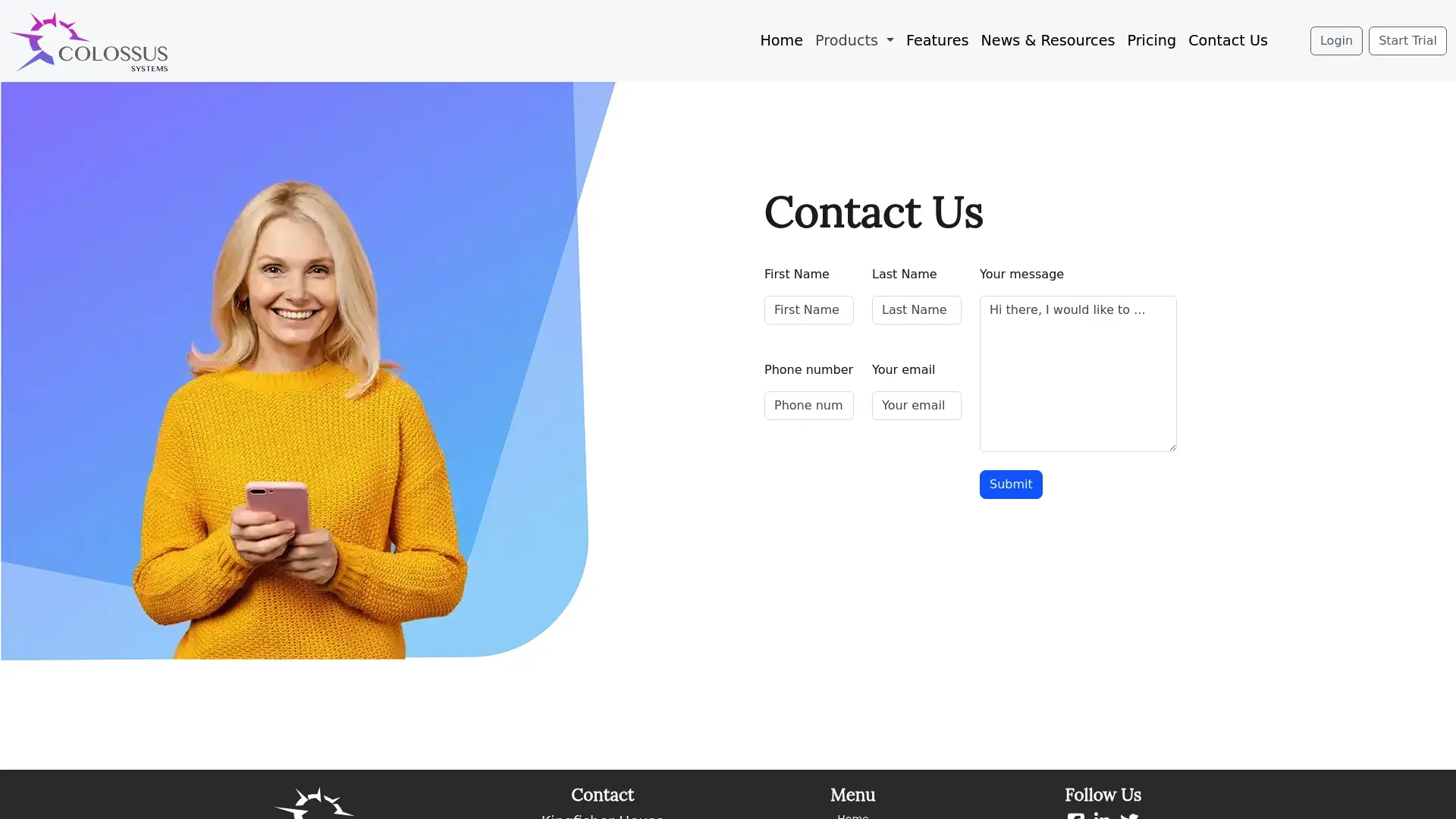What is a Member Directory? Understanding Its Purpose

A member directory sounds like little more than an upgraded address book, useful for jotting down names and numbers within an organisation. Yet, these digital databases have evolved far beyond their humble origins and now underpin entire professional communities. In fact, research shows that strategic member directories can directly enhance communication, drive collaboration, and strengthen organisational growth in ways a standard list never could. The real power lies in how these systems transform simple contact details into dynamic engines for networking and knowledge sharing.
Table of Contents
- Defining A Member Directory: Its Core Elements
- Understanding The Importance Of A Member Directory
- How Member Directories Function And Their Structure
- Key Concepts Behind Member Directory Management
- Real-World Applications Of Member Directories In Organisations
Quick Summary
| Takeaway | Explanation |
|---|---|
| Member directories enhance networking opportunities. | They facilitate structured interactions among professionals, boosting collaborative efforts and connections. |
| Modern directories are dynamic data systems. | Rather than static lists, they allow real-time updates and secure member access to information. |
| Effective member management requires strategic architecture. | A solid framework ensures the integrity and utility of membership information for organisational goals. |
| Directories support operational decision-making. | They provide insights into membership trends and facilitate data-driven strategies for growth. |
| Sector-specific applications maximise directory utility. | Different fields utilise directories uniquely to enhance engagement, resource management, and professional development. |
Defining a Member Directory: Its Core Elements
A member directory represents a comprehensive organisational tool designed to catalogue and manage critical information about an organisation’s members. Unlike simple contact lists, these directories serve as sophisticated repositories of professional and organisational data that facilitate communication, networking, and membership management.
To illustrate the essential components of a modern member directory, the table below summarises the fundamental elements and their descriptions.
| Component | Description |
|---|---|
| Personal Identification | Name, professional title, contact details, and unique member identifier |
| Professional Background | Institutional affiliations, qualifications, and areas of expertise |
| Membership Status | Current membership tier, join date, and renewal information |
| Communication Preferences | Preferred contact methods and communication channels |
Essential Structural Components
At its core, a member directory contains several fundamental elements that transform it from a basic contact record into a powerful organisational resource. These components typically include:
- Personal Identification: Name, professional title, contact details, and unique member identifier
- Professional Background: Institutional affiliations, qualifications, areas of expertise
- Membership Status: Current membership tier, join date, renewal information
- Communication Preferences: Preferred contact methods, communication channels
According to research from professional association management studies, these directories play a crucial role in enabling structured professional interactions and maintaining organisational cohesion.
Technological Integration and Functionality
Modern member directories extend beyond static information repositories. They are dynamic systems that integrate advanced features like real-time updates, privacy controls, and searchable interfaces. Learn more about membership management solutions that can transform how organisations track and engage with their members.
The technological infrastructure supporting these directories allows for secure, customisable access.
Members can control their profile visibility, update their information independently, and connect with other professionals within their network. This approach not only streamlines administrative processes but also empowers members to manage their professional representations effectively.
Understanding the Importance of a Member Directory
Member directories serve as strategic tools that extend far beyond simple contact management. They represent critical infrastructure for organisations seeking to enhance communication, collaboration, and professional networking among their members.
Strategic Organisational Benefits
The significance of a member directory lies in its ability to create structured, meaningful connections within professional communities. These platforms offer numerous strategic advantages:

- Networking Opportunities: Enable targeted professional interactions
- Institutional Knowledge Management: Centralise member expertise and backgrounds
- Communication Efficiency: Streamline member outreach and engagement
- Professional Development: Support member growth through structured connections
According to research from EDUCAUSE, comprehensive member directories can transform how professional communities interact and share knowledge.
Enhanced Operational Effectiveness
Beyond networking, member directories provide organisations with powerful operational capabilities. They facilitate data-driven decision making by offering comprehensive insights into membership composition, professional trends, and potential collaboration opportunities. Learn more about member portals to understand how technology enhances these capabilities.
By creating a transparent, accessible platform, organisations can foster a sense of community, encourage professional development, and create meaningful engagement pathways. The modern member directory is not just a list of contacts but a dynamic ecosystem that supports organisational growth and member success.
How Member Directories Function and Their Structure
Member directories operate as sophisticated digital ecosystems that transform raw membership data into structured, accessible, and dynamic information repositories. These systems go beyond simple contact management, creating intelligent platforms that support organisational communication and strategic decision making.
Architectural Framework and Data Organisation
The structural integrity of member directories relies on a complex yet systematic approach to data management. These platforms typically incorporate multiple layers of organisational logic:
- Hierarchical Classification: Organise members by professional categories, departments, or membership tiers
- Relational Mapping: Create interconnected profiles that highlight professional relationships
- Access Control Mechanisms: Implement granular permissions for data visibility and modification
- Dynamic Indexing: Enable rapid, intelligent searching across multiple profile attributes
According to research from UC Berkeley’s CalNet Directory, sophisticated directory services use organisational units to categorise and manage complex membership information effectively.
Technical Infrastructure and Data Flow
Modern member directories leverage advanced technological frameworks to ensure seamless information management. These platforms integrate multiple data sources, providing real-time updates and comprehensive member insights. Check out our latest industry insights to understand the evolving landscape of membership management technologies.
The technical backbone of these systems includes robust authentication protocols, secure data transmission mechanisms, and scalable architecture that can accommodate growing and changing membership structures. By creating flexible, intelligent platforms, organisations can transform their member directories from static contact lists into powerful strategic tools that facilitate professional networking, knowledge sharing, and organisational growth.
Key Concepts Behind Member Directory Management
Member directory management represents a sophisticated approach to organizing, maintaining, and leveraging membership information within professional and organisational contexts. This process involves complex strategies that go beyond simple data storage, focusing on creating intelligent, responsive systems that support organisational objectives.
Foundational Management Principles
Effective member directory management is built upon several critical conceptual frameworks that ensure data integrity, relevance, and utility:
- Data Governance: Establishing clear protocols for data collection, validation, and maintenance
- Privacy Protection: Implementing robust security measures to safeguard member information
- Consent Management: Ensuring transparent and voluntary member data sharing
- Dynamic Update Mechanisms: Creating systems that allow real-time profile modifications
According to research from the Ed-Fi Alliance, successful directory management requires a comprehensive understanding of complex data relationships and organizational structures.
Strategic Information Architecture
The core of member directory management lies in developing a strategic approach to information architecture that supports organisational goals. Explore advanced member management strategies to understand how technology can transform directory management.
This approach involves creating flexible systems that can adapt to changing membership landscapes, support complex organizational hierarchies, and provide meaningful insights through intelligent data aggregation. By treating member directories as dynamic ecosystems rather than static repositories, organisations can unlock powerful networking, communication, and strategic planning capabilities.
Real-World Applications of Member Directories in Organisations
Member directories have evolved from simple contact repositories to sophisticated tools that drive organisational effectiveness across multiple sectors. These platforms now serve as critical infrastructure for strategic communication, resource allocation, and professional networking in diverse professional environments.
This table presents a comparison of how different sectors utilise member directories to address their unique goals and operational needs.
| Sector | Primary Uses of Member Directories |
|---|---|
| Academic Institutions | Track faculty credentials, research affiliations, and departmental structures |
| Professional Associations | Facilitate networking, credential verification, and member communication |
| Non-Profit Organisations | Manage volunteer networks, donor relationships, and programme participation |
| Corporate Environments | Support talent mapping, internal mobility, and skills inventory management |
Sector-Specific Implementation Strategies
Different organisational types leverage member directories in unique and innovative ways, transforming how they manage and engage with their professional communities:
![]()
- Academic Institutions: Track faculty credentials, research affiliations, and departmental structures
- Professional Associations: Facilitate networking, credential verification, and member communication
- Non-Profit Organizations: Manage volunteer networks, donor relationships, and programme participation
- Corporate Environments: Support talent mapping, internal mobility, and skills inventory management
According to research from the W3C’s Organization Ontology, standardized frameworks are crucial for creating interoperable and meaningful organizational directories.
Practical Engagement and Strategic Capabilities
Modern member directories transcend traditional administrative functions, becoming powerful platforms for strategic insights and engagement. Discover how different organizations benefit from member management solutions to understand the transformative potential of these systems.
By integrating advanced analytics, real-time communication tools, and comprehensive profiling capabilities, member directories enable organisations to create dynamic, responsive ecosystems that support professional growth, knowledge sharing, and strategic collaboration. These platforms are no longer passive repositories but active engines of organisational intelligence and connectivity.
Unlock the Full Power of Your Member Directory Today
Are you tired of struggling with outdated tools that limit your ability to connect, manage, and engage with your members? The article on member directories highlighted key issues such as the need for streamlined communication, dynamic data management, and personalised member engagement. If your current system feels like a simple contact list instead of a smart networking solution, you are missing out on opportunities for growth and true organisational impact.

Take action now and transform your membership management with Colossus Systems. Our unified platform is designed to help professional associations, membership organisations, and nonprofits create intelligent, searchable, and secure member directories. Discover how our member management software empowers you to strengthen connections, automate updates, and drive deeper engagement. Ready to build your own dynamic ecosystem for growth? Connect with us through our contact page and start delivering the member experience your community deserves.
Frequently Asked Questions
What is a member directory?
A member directory is a comprehensive tool that catalogues and manages critical information about an organisation’s members, including professional details and communication preferences.
What are the key components of a member directory?
Key components typically include personal identification details, professional backgrounds, membership status, and communication preferences.
How does a member directory improve organisational communication?
A member directory enhances organisational communication by facilitating structured networking, streamlining outreach, and enabling efficient member engagement.
What are the benefits of using a dynamic member directory?
Dynamic member directories provide real-time updates, privacy controls, searchable interfaces, and empower members to manage their profiles, driving engagement and operational effectiveness.